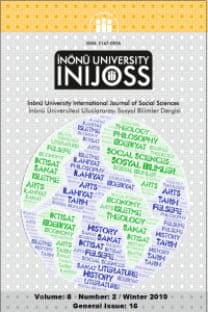CLOUD NINE IN RELATION TO EPIC THEATRE
Brecht, epic theatre, alienation effect, Caryl Churchill, gender and race as constructs
___
1. Adiseshiah, S., (2009). Churchill’s Socialism: Political Resistance in the Plays of Caryl Churchill. Newcastle upon Tyne, UK: Cambridge Scholars Publishing.2. Aston, E., & Diamond, E. (2009). Introduction: on Caryl Churchill. In E. Aston & E. Diamond (Eds.), The Cambridge Companion to Caryl Churchill (pp. 1-17). Cambridge, UK: Cambridge UP.
3. Brecht, B. (1992). Brecht on Theatre: The Development of an Aesthetic. John Willett (Ed. And Trans.). New York, NY: Hill and Wang.
4. Churchill, C. (1985). Cloud Nine. Plays: One. London, UK: Methuen. (243-320).
5. Diamond, E. (1988). (In)Visible Bodies in Churchill’s Theatre. Theatre Journal, 40 (2), 188-204.
6. Dolan, J. (2010). Theatre and Sexuality. Basingstoke, UK: Palgrave Macmillan.
7. Fanon, F. (1967). Black Skin, White Masks. Charles Lam Marhann (Trans.). New York, NY: Grove.
8. Foucault, M. (1981). The History of Sexuality, Volume One. An Introduction. Harmondsworth, UK: Pelican.
9. Kritzer, A. H. (1991). The Plays of Caryl Churchill: Theatre of Empowerment. New York, NY: St. Martin's.
10. Newton, J., & Rosenfelt, D. (2012). Introduction: Toward a Materialist-Feminist Criticism. In J. Newton & D. Rosenfelt (Eds.), Feminist Criticism and Social Change: Sex, Class, and Race in Literature and Culture (10th ed.). (pp. xv-xxxviii). New York, NY: Routledge.
11. Selden, R., Widdowson, P., Brooker, P. (2005). A Reader’s Guide to Contemporary Literary Theory (5th ed.). Harlow, UK: Pearson Longman.
12. Speirs, R. (1987). Bertolt Brecht. Basingstoke, UK: Macmillan.
- ISSN: 2147-0936
- Yayın Aralığı: Yılda 2 Sayı
- Yayıncı: İnönü Üniversitesi
DUAL NATURE OF VIOLENCE AND DIVIDED SELF OF MAN IN THE POEMS OF TED HUGHES
DISEMPOWERED ‘OTHERS’ AND THE FEMALE SOLIDARITY IN SUE TOWNSEND’S BAZAAR AND RUMMAGE (1982)
NATURE, CRITICISM OF THE WORLD, AND LOVE IN “DOVER BEACH” AND “LOVE AMONG THE RUINS”
A KOHUTIAN APPROACH TO “A BIT OF SINGING AND DANCING” BY SUSAN HILL
THE LIFELONG IMPACTS OF ADOLESCENT TRAUMA IN THE SAFFRON KITCHEN
FROM A JOURNEY OF INNER STRUGGLE TO A CATASTROPHE: ^ HENRIK IBSEN’S HEDDA GABLER
